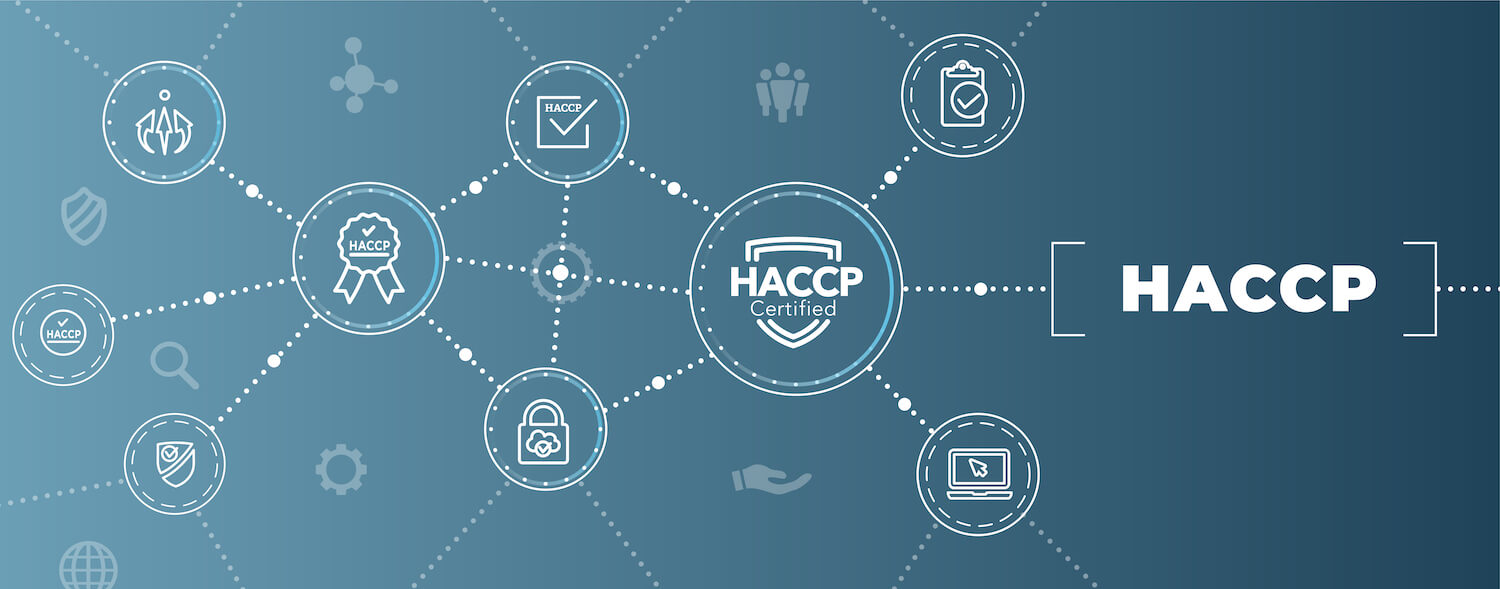
The aim of HACCP is to ensure the production of safe, high-quality food and to protect the reputation of your food business. This system is based on seven principles, which are designed to be proactive and preventative, rather than reactive and corrective.
Discover everything you need to know about the HACCP plan.
1. Hazard analysis
The first principle of HACCP is to conduct a hazard analysis. This involves identifying potential physical, chemical, and biological hazards at each step in the food production process.
Physical hazards include things like glass, metal, and plastic fragments that could contaminate food. Chemical hazards include things like cleaning chemicals, pesticides, and food additives. Biological hazards include things like bacteria, viruses, and parasites that can cause food borne illnesses. It is important to identify these hazards because they can pose a risk to the safety of the food and to the people who consume it.
2. Critical control points
The second principle of HACCP is to determine the critical control points (CCPs). These are points in the process where a hazard can be controlled or prevented.
For example, in a commercial kitchen, the cooking temperature of meat could be a CCP because undercooking the meat could result in the growth of harmful bacteria. It is important to identify CCPs because they are the key points in the process where a hazard can be controlled or prevented.
3. Establish critical limits
The third principle of HACCP is to establish critical limits. Critical limits are guidelines for the safe operation of each CCP, such as specific temperature, pH or other parameters.
For example, the critical limit for cooking poultry might be a minimum internal temperature of 75 degrees Celsius for at least 30 seconds to ensure that harmful bacteria are destroyed. It is important to establish critical limits because they provide a clear understanding of what is considered safe and what is not.
4. Monitor
The fourth principle of HACCP is to implement monitoring procedures. Monitoring is the regular checking of CCPs to ensure that they are operating within the established critical limits. This can be done using a variety of methods, such as temperature probes or visual inspection. It is important to implement monitoring procedures because they help to ensure that CCPs are operating correctly and that the food is safe.
5. Corrective actions
The fifth principle of HACCP is to establish corrective actions. Corrective actions are the steps that should be taken if a CCP is not operating within the critical limits.
For example, if the cooking temperature of meat falls below the critical limit of 75 degrees Celsius, you must adjust your cooking method to meet the temperature requirement. It is important to have a plan in place for corrective actions because they help to prevent the production of unsafe food.
6. Verification
The sixth principle of HACCP is to implement verification procedures. Verification is the regular checking of the entire HACCP system to ensure that it is working effectively. This can include things like reviewing the hazard analysis, CCPs, monitoring and corrective actions, and documentation procedures. It is important to implement verification procedures because they help to ensure that the HACCP system is functioning correctly and that the food is safe.
7. Record keeping and documentation
The seventh and final principle of HACCP is to establish record-keeping and documentation procedures. Record-keeping involves keeping detailed records of all aspects of the HACCP system, including hazard analysis, CCPs, monitoring and corrective actions, and verification activities.
Documentation can include written procedures, such as flow charts and checklists. It is important to establish record-keeping and documentation procedures because they provide a clear understanding of the HACCP system and help to ensure that it is being followed correctly.
Chomp and HACCP
Chomp simplifies food safety management with an easy to use digital platform that's based on HACCP principles. This paperless system creates many efficiencies resulting in time savings.
Chefs and kitchen teams are prompted daily, weekly and monthly to complete food safety tasks ensuring compliance, best practices and the highest quality for your customers.

